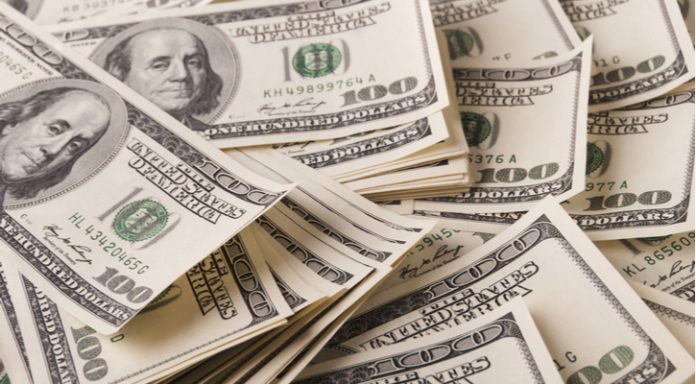The pound fell heavily against the dollar on Thursday as investors digested disappointing UK data and as they looked ahead to US non-farm payrolls later today. The pound US dollar exchange rate tumbled to a low of US$1.3966, its lowest levels since March 19th.
| What do these figures mean? |
|---|
|
When measuring the value of a pair of currencies, one set equals 1 unit and the other shows the current equivalent. As the market moves, the amount will vary from minute to minute. For example, it could be written: 1 GBP = 1.28934 USD Here, £1 is equivalent to approximately $1.29. This specifically measures the pound’s worth against the dollar. If the US dollar amount increases in this pairing, it’s positive for the pound. Or, if you were looking at it the other way around: 1 USD = 0.77786 GBP In this example, $1 is equivalent to approximately £0.78. This measures the US dollar’s worth versus the British pound. If the sterling number gets larger, it’s good news for the dollar. |
Activity in the UK service sector slumped in March, as adverse weather conditions hit normal business operations in the sector. The service sector pmi dropped to 51.7 in March from 54.5 in February. This figure was significantly below analyst’s expectations and less than the long-term average as heavy snowed disrupted most of the UK.
Analysts and investors alike had been under the assumption that there was an increasing possibility that the Bank of England would raise interest rate rise in May rather than waiting until Autumn as initially planned. However, with the dominant service sector under severe pressure from a squeezed consumer and now challenging weather conditions, investors fear that the BoE could hold off on the interest rate hike. This sent the pound lower.
| Why do raised interest rates boost a currency’s value? |
|---|
| Interest rates are key to understanding exchange rate movements. Those who have large sums of money to invest want the highest return on their investments. Higher interest rate environments tend to offer higher yields. So, if the interest rate or at least the interest rate expectation of a country is relatively higher compared to another, then it attracts more foreign capital investment. Large corporations and investors need local currency to invest. More local currency used then boosts the demand of that currency, pushing the value higher. |
There is no high impacting UK economic data due to be released today. Market participants will now wait until next week for wage data for further clues on the health of the UK economy.
Dollar Steady Ahead of NFP
The US dollar was broadly in favour in the previous session as fears over a trade war between China and US eased. After China announced further potential tariff on US imports the White House softened its stance towards China, boosting hopes that the world’s two largest economies will find an alternative route forward.
Today investors will be looking straight towards the US labour departments non-farm payroll report. This is the most watched economic release on the calendar. Analysts are forecasting that 198,000 new jobs will have been created in March, well below the 313,000 created in February. However, the unemployment rate is forecast to fall to 4.0% from 4.1% but perhaps more importantly analysts are predicting that average earnings will have grown substantially.
Average earnings have recently become a very closely watched section of the non-farm payroll report. Should average earnings be higher than the 0.3% increase analysts are anticipating, the dollar could rally.
| How does the non-farm payroll (NFP) affect the US dollar? |
|---|
| It works like this, when there is low unemployment and high job creation, the demand for workers increases. As demand for workers goes up, wages for those workers also go up. Which means the workers are now taking home more money to spend on cars, houses or in the shops. As a result, demand for goods and services also increase, pushing the prices of the good and services higher. That’s also known as inflation. When inflation moves higher, central banks are more likely to raise interest rates, which then pushes up the currency’s worth. |
|
This article was initially published on TransferWise.com from the same author. The content at Currency Live is the sole opinion of the authors and in no way reflects the views of TransferWise Inc. |





